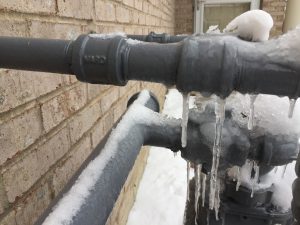Protecting Against Frozen Pipes: Effective Tips for Winter
Protecting Against Frozen Pipes: Effective Tips for Winter
Blog Article
Everyone seems to have their unique idea with regards to How to Prevent Your Pipes From Freezing.

Winter can ruin your pipes, specifically by freezing pipelines. Right here's just how to prevent it from happening and what to do if it does.
Intro
As temperature levels decrease, the danger of frozen pipelines rises, possibly resulting in costly repairs and water damages. Understanding how to avoid frozen pipes is vital for homeowners in cold climates.
Recognizing Frozen Pipelines
What causes pipelines to freeze?
Pipes freeze when revealed to temperature levels below 32 ° F (0 ° C) for extended durations. As water inside the pipes ices up, it broadens, taxing the pipeline wall surfaces and potentially creating them to burst.
Threats and damages
Icy pipes can lead to water system disturbances, residential property damages, and expensive repair work. Burst pipelines can flooding homes and trigger considerable architectural damages.
Indicators of Frozen Piping
Recognizing icy pipelines early can stop them from rupturing.
Exactly how to determine frozen pipes
Look for lowered water circulation from faucets, unusual smells or sounds from pipes, and visible frost on revealed pipelines.
Prevention Tips
Insulating at risk pipes
Cover pipes in insulation sleeves or use warm tape to shield them from freezing temperatures. Concentrate on pipelines in unheated or exterior locations of the home.
Heating techniques
Maintain interior spaces appropriately heated up, especially locations with plumbing. Open cabinet doors to permit warm air to flow around pipes under sinks.
Safeguarding Outdoor Pipes
Yard hose pipes and outdoor faucets
Separate and drain pipes yard hoses prior to winter season. Install frost-proof faucets or cover outdoor faucets with insulated caps.
What to Do If Your Pipes Freeze
Immediate activities to take
If you think icy pipelines, maintain taps open up to ease stress as the ice melts. Utilize a hairdryer or towels soaked in hot water to thaw pipes slowly.
Long-Term Solutions
Structural adjustments
Take into consideration rerouting pipelines away from exterior walls or unheated areas. Add additional insulation to attics, basements, and crawl spaces.
Upgrading insulation
Purchase top notch insulation for pipelines, attics, and walls. Proper insulation helps maintain regular temperature levels and minimizes the danger of frozen pipes.
Verdict
Protecting against icy pipes calls for aggressive procedures and quick feedbacks. By recognizing the causes, signs, and preventive measures, property owners can protect their pipes during winter.
5 Ways to Prevent Frozen Pipes
Drain Outdoor Faucets and Disconnect Hoses
First, close the shut-off valve that controls the flow of water in the pipe to your outdoor faucet. Then, head outside to disconnect and drain your hose and open the outdoor faucet to allow the water to completely drain out of the line. Turn off the faucet when done. Finally, head back to the shut-off valve and drain the remaining water inside the pipe into a bucket or container. Additionally, if you have a home irrigation system, you should consider hiring an expert to clear the system of water each year.
Insulate Pipes
One of the best and most cost-effective methods for preventing frozen water pipes is to wrap your pipes with insulation. This is especially important for areas in your home that aren’t exposed to heat, such as an attic. We suggest using foam sleeves, which can typically be found at your local hardware store.
Keep Heat Running at 65
Your pipes are located inside your walls, and the temperature there is much colder than the rest of the house. To prevent your pipes from freezing, The Insurance Information Institute suggests that you keep your home heated to at least 65 degrees, even when traveling. You may want to invest in smart devices that can keep an eye on the temperature in your home while you’re away.
Leave Water Dripping
Moving water — even a small trickle — can prevent ice from forming inside your pipes. When freezing temps are imminent, start a drip of water from all faucets that serve exposed pipes. Leaving a few faucets running will also help relieve pressure inside the pipes and help prevent a rupture if the water inside freezes.
Open Cupboard Doors
Warm your kitchen and bathroom pipes by opening cupboards and vanities. You should also leave your interior doors ajar to help warm air circulate evenly throughout your home.

Hopefully you liked our piece about How To Avoid Freezing Pipes. Thanks a lot for taking the time to browse our posting. Sharing is caring. You won't know, you could be doing someone a favor. Thank you so much for taking the time to read it.
Call Today Report this page